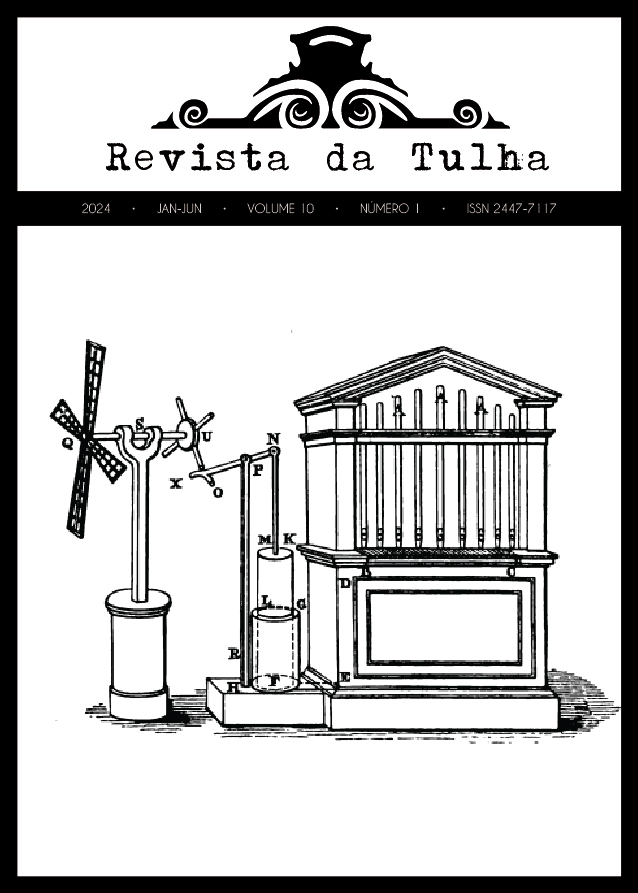La Traviata: interpretative challenges of a Brazilian operatic production in the 21st century
DOI:
https://doi.org/10.11606/issn.2447-7117.rt.2024.222270Keywords:
Musical Performance, Operatic Conducting, Stage Performance, Artistic DirectionAbstract
This article presents applied results of a post-doctoral research on musical performance, specifically in the field of operatic interpretation, in the ambience of a full production of Verdi’s La traviata presented on August 23 in São Paulo. This research will deal with the aspects of operatic conducting and its specific technical matter, as well interpretative issues of artistic direction such as spectacle’s general conception and working together with the creative teamwork, including scenic director, light, set and costume designers, discussing in detail musical and scenic interpretative decisions and options regarding the production of an 19th Century opera nowadays.
Downloads
References
AGAWU, Kofi. Music as discourse: Semiotic adventures in romantic music. Oxford University Press, 2014.
CISNE NEGRO. Cisne Negro 30 anos de dança. São Paulo: Retrato Editora, 2006.
CONSTANTINO, Alexander. The Cimbasso and Tuba in Operatic Works of Giuseppe Verdi: a Pedagogical and Aesthetic Comparison. Dissertation for the Degree of Doctor of Musical Arts. University of North Texas: Dallas, 2010.
DUMAS FILHO, Alexandre. A dama das camélias. São Paulo: Saraiva, 1953.
FERGUSON, Christine. "Surface Tensions: Steampunk, Subculture, and the Ideology of Style”. Journal of Neo-Victorian Studies. 4(2) University of Glasgow, 2011. https://eprints.gla.ac.uk/59454/ (acesso: 22/12/2023).
HARNONCOURT, Nikolaus. O discurso dos sons: caminhos para uma nova compreensão musical. Trad. Marcelo Fagerlande. Rio de Janeiro: Jorge Zahar Editor, 1998.
HATTEN, Robert. Interpreting Musical Gestures, Topics and Tropes. Bloomington, Indianapolis: Indiana University Press, 2004.
HEDDON, Deirdre; MILLING, Jane. “A prática do devising”. Revista Alberto, N. 6. São Paulo (SP): SP Escola de Teatro, 2013. https://www.spescoladeteatro.org.br/wp-content/uploads/2023/06/ALberto-Edicao-6.pdf (acesso: 11/02/2024)
KOGAWA, João Marcos Mateus. “Geni no entremeio de uma arena de vozes”. Revista Urutágua. N. 10. Maringá (PR): Universidade Estadual de Maringá, Ago.-Nov.2006. http://www.urutagua.uem.br/010/10kogawa.pdf (acesso: 18/12/2023)
MASCHKA, Kloiber Konold. Handbuch der Oper. Kassel: Bärenreiter-Verlag Karl Vötterle; J. B. Metzler, 2019.
MARTÍN SÁEZ, Daniel. “La crisis de la ópera en la obra de Theodor Adorno. Historia y crítica de un tópico infundado”. Opus, v. 27 n. 1, p. 1-19, jan/abr. 2021. http://dx.doi.org/10.20504/opus2021a2711 (acesso: 06/05/2023)
MIRKA, Danuta (Ed.). The Oxford Handbook of Topic Theory. New York: Oxford University Press, 2014.
MONELLE, Raymond. The Musical Topic. Hunt, Military and Pastoral. Bloomington: Indiana University Press, 2006
PERSCHON, Mike Dieter. The Steampunk Aesthetic: Technofantasies in a Neo-Victorian Retrofuture. Tese de Doutorado. Edmonton: Universidade de Alberta (Canadá), 2012.
PORTER, Andrew et al. Mestres da ópera italiana II: Verdi, Puccini. Tradução de Magda Lopes. Porto Alegre: L&PM, 1989.
SCHOENBERG, Arnold. Style and Idea. Selected Writings of Arnold Schoenberg. 60th anniversary edition. Edited by Leonard Stein, translated by Leo Black. Los Angeles: University of California Press, 1984.
SOUZA, César Martins; GUERRA, Gutemberg Armando Diniz; SOUSA, Neide Maria Fernandes Rodrigues. “Da dupla moral social ao sacrifício vicário em A dama das camélias de Alexandre Dumas Filho e Lucíola de José de Alencar”. Revista Feminismos. Vol. 10, N2 e 3, maio-dez/2022.
THIOLLENT, Michel. Metodologia da pesquisa-ação. 18. Ed. São Paulo: Cortez, 2011.
Downloads
Published
Issue
Section
License
Copyright (c) 2024 Luciano Camargo, Rodolfo García Vázquez

This work is licensed under a Creative Commons Attribution-NonCommercial 4.0 International License.
Authors retain copyright and grant the journal the right to first publication, with the work licensed under the Creative Commons Attribution License CC-BY-NC:
This work is licensed under a Creative Commons Attribution 4.0 International License.



